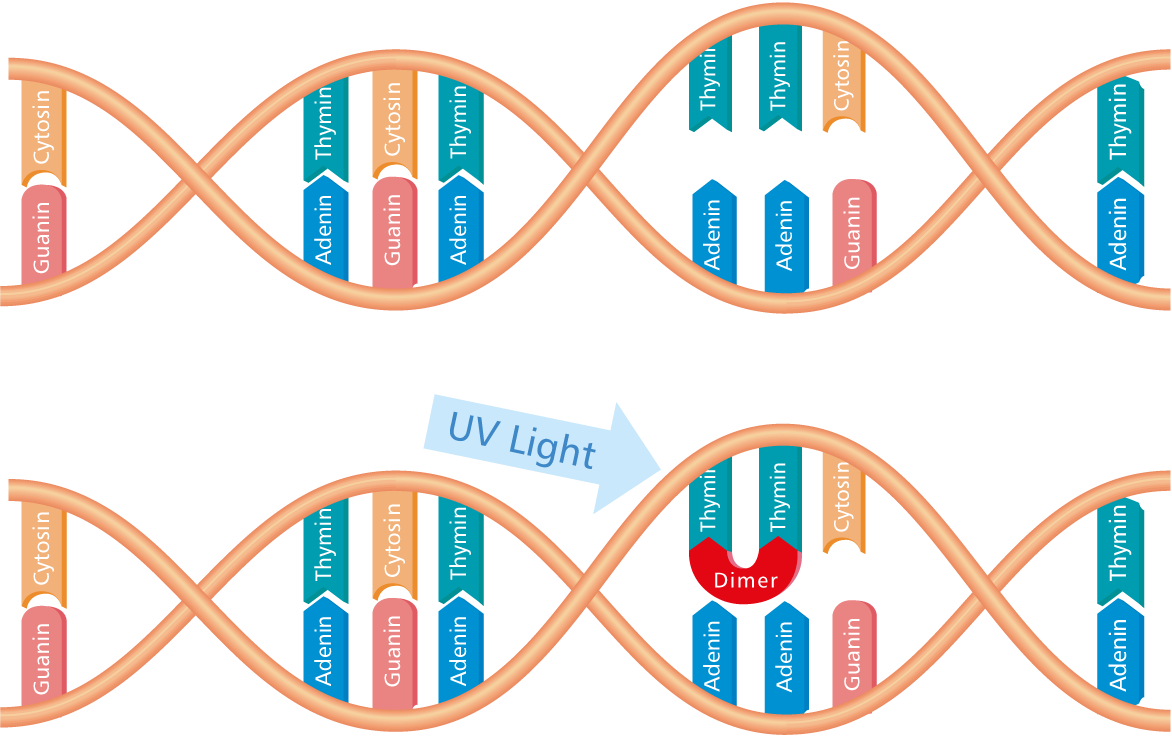UV light can be used to effectively combat microorganisms such as germs, viruses and bacteria. One of the major advantages of UV disinfection is that it does not use chemicals, as this method is modelled on the natural mode of action of sunlight. UV disinfection is therefore an environmentally friendly alternative for treating water, air and surfaces.
UV light can destroy the molecular components of microorganisms. This property is utilised in UV disinfection. A specific range of UV light, known as UV-C radiation, is used.
UV radiation is a part of sunlight that is invisible to the human eye. UV light has a wavelength between 100 nm and 380 nm and is divided into three ranges: UV-A, UV-B and UV-C. Only the high-energy UV-C radiation is used for UV disinfection.

dissol GmbH produces low-pressure emitters that emit radiation with a wavelength of 254 nm. This wavelength is particularly effective at inactivating harmful germs, viruses and fungi, as it damages or destroys their DNA and thus prevents them from reproducing.
Chlorine-resistant pathogens in particular, such as cryptosporidia, can be inactivated with UV-C radiation. The addition of chemicals is generally no longer necessary. Properties such as taste, odour and pH value are not affected by UV disinfection. An unbeatable advantage over chemical treatment methods!

UV-C lamps from dissol GmbH are in use the world over as a physical alternative for disinfecting surfaces, air and water. They are widely deployed in systems used to disinfect municipal or industrial wastewater and drinking water.
Other areas of application for our lamps include the semiconductor industry, pharmaceuticals, fish farming, the beverage industry and swimming pools.
UV-C technology opens up a world of opportunities. Are you looking for a tailor-made solution to fit your needs? We look forward to supporting you with our expertise.
